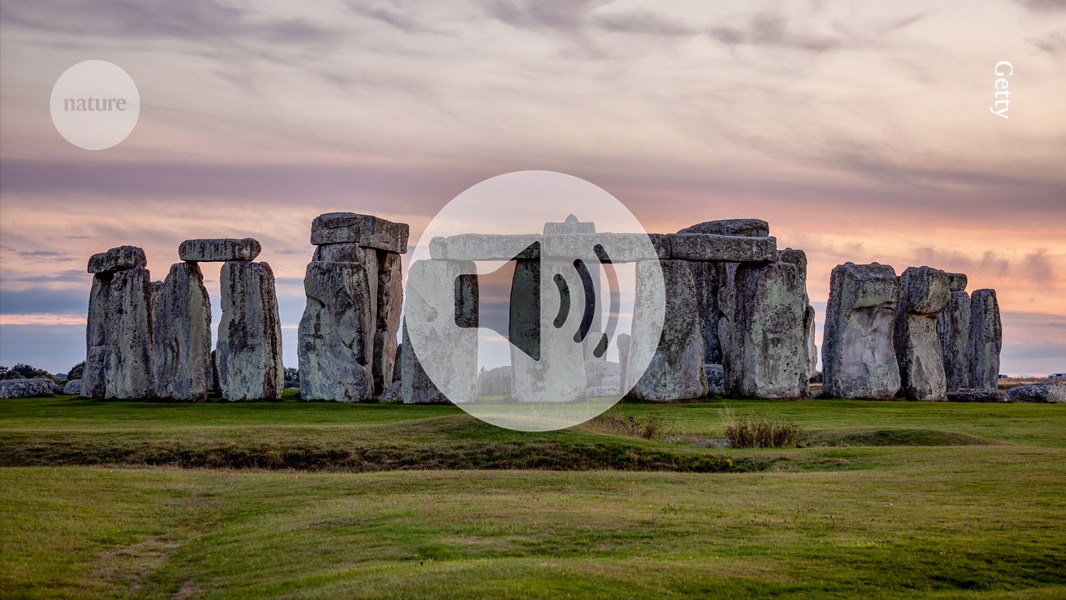Download the Nature Podcast 14 August 2024
In this episode:
00:48 The mystery of Stonehenge’s Altar Stone
Stonehenge’s central stone came from northern Scotland, more than 600 miles away from the monument, according to a new analysis of its geochemistry. It is commonly accepted that many of the rocks that make up the iconic neolithic monument came from Wales, 150 miles from the site. Previously, it had been thought that a central stone, called the Altar Stone, had also come from this area, known as the Preseli Hills. The new work suggests that the ancient Britons went much farther, perhaps ferrying the Altar Stone hundreds of miles, to place the rock at the centre of Stonehenge.
Research Article: Clarke et al.
News: Stonehenge’s enigmatic centre stone was hauled 800 kilometres from Scotland
12:12 Research Highlights
How a parasite could help scientists break through the blood–brain barrier, and the physics of skateboard moves.
Research Highlight: Engineered brain parasite ferries useful proteins into neurons
Research Highlight: How expert skateboarders use physics on the half-pipe
14:13 A new way to break bonds
Chemists have demonstrated a way to break selenium–selenium bonds unevenly, something they have been trying for decades. Chemical bonds have to be broken and reformed to create new compounds, but they often don’t break in a way that allows chemists to form new bonds in the ways they would like. Breaks are often ‘even’, with electrons shared equally between atoms. To prevent such an even split, a team used a specific solvent and a combination of light and heat to force the selenium bonds to break unevenly. This could potentially open up ways to create compounds that have never been made before.
Research Article: Tiefel et al.
News and Views: Innovative way to break chemical bonds broadens horizons for making molecules
Never miss an episode. Subscribe to the Nature Podcast on Apple Podcasts, Spotify, YouTube Music or your favourite podcast app. An RSS feed for the Nature Podcast is available too.


